Ancient Art and a Friend's
Modern Dilemma

SUE BRATTLE
UPDATE on Woman Who Preserved Amazing Treasure Trove
Lui Che Woo Prize awards ceremony, Hong Kong
WHEN the “Asian Nobel” prizewinners were announced at a press conference in August, I posted about one winner who has devoted her life to documenting and preserving a two-kilometre stretch of caves filled with Buddhas, manuscripts and art in the middle of nowhere in China. Everything about her story had captured my imagination.
The organisers said the prizewinners would come to Hong Kong in October to receive their award of HK$20 million each (around US$2.5 million), but a lot has happened in Hong Kong since then.
However, true to their word the winners flew in to this city now riven by protests and I went along to another press conference in the hope of having a chat. It was held at the HK Exhibition and Convention Centre this time, in a setting so grand that us media looked a bit lost.
We also looked a bit under-dressed, since the press conference was being followed by a grand banquet in the winners’ honour so almost everyone was in evening gowns and tuxedos. Anyway, it all went smoothly and businessman Dr Lui Che Woo, dressed in tuxedo and his signature flat cap, climbed up on stage to present his namesake prizes.
It then became apparent that was the nearest I’d get to Ms Fan Jinshi, the 81-year-old archaeologist who bagged the Positive Energy prize. I’d been able to take her photo earlier as she sat chatting to the invited guests around her and she made a gracious acceptance speech in which she said youngsters “brighter and smarter than me” will take on her work. “The longer time I have spent in the caves, the more I realise how important they are. They are a very important part of human civilisation,” she said.
And that was it. During the short ceremony, some very smart security guards had turned up and were dotted around the room. I left the venue listening to my own footsteps as everywhere was eerily empty and quiet. I got to the taxi stand, and there were five taxis waiting and no queue – outside an exhibition centre so vast you can easily clock up your daily 10,000 steps finding your destination.
On the way home I looked up the event on my phone, and all became clear. As we members of the press had been leaving, the guest of honour for the banquet was arriving – Mrs Carrie Lam, chief executive of Hong Kong and the beleaguered target of months of unrest in the city. It turns out she’s always the speaker at this ceremony, and she’s an old friend of Ms Jinshi. I wonder who will deliver the speech next year?
Top picture: Interior of cave 275 with a sculpture of a bodhisattva, Northern Liang dynasty (420-429 AD). Photo: Wu Jian/Dunhuang Academy.
October 2019
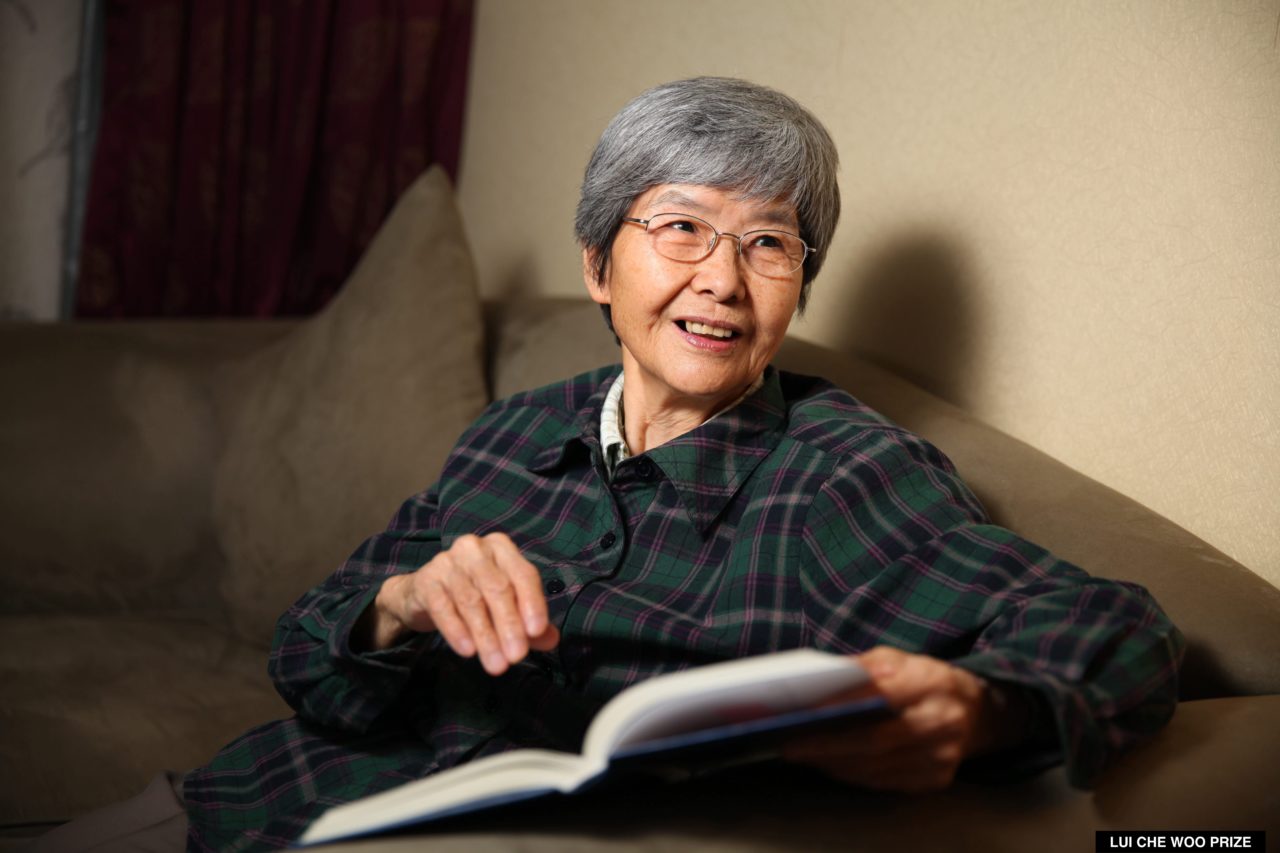
When the Real Deal Makes a Press Conference Worthwhile
ORIGINAL POST: Lui Che Woo Prize press conference, Hong Kong
PRESS conferences, if you’ve never been to one, are set pieces with every detail orchestrated to within an inch of its life. There might be a celebrity or two if it’s the launch of a product, or an eminent academic, politician or so on if it’s an announcement.
Now and then, they are genuinely interesting and it’s one of those that I attended last week. The Lui Che Woo Prize for World Civilisation has been called the Asian Nobels; now in its fourth year and funded by the multi-billionaire businessman it is named after, each recipient receives HK$20 million (around US$2.5 million).
Dr Lui held the press conference to announce that one of his three winners this year is Ms Fan Jinshi, who has spent the last 56 of her 81 years researching and protecting the Dunhuang Mogao Caves in north China, also known as the Caves of 1,000 Buddhas.
No, I’d never heard of them either, so sat in the lush surroundings of Hong Kong’s Four Seasons hotel desperately Googling them while Dr Lui was up on stage speaking with blatant admiration about this Chinese archaeologist.
The images that came up on my iPhone screen blew my mind; a collection of around 1,000 exquisite Buddhas carved into rocks in the middle of nowhere. Except, that was the point. Dunhuang was the first place along the ancient Silk Road that traders from the west would encounter in China. And for hundreds of years it was a place of pilgrimage for Buddhists.
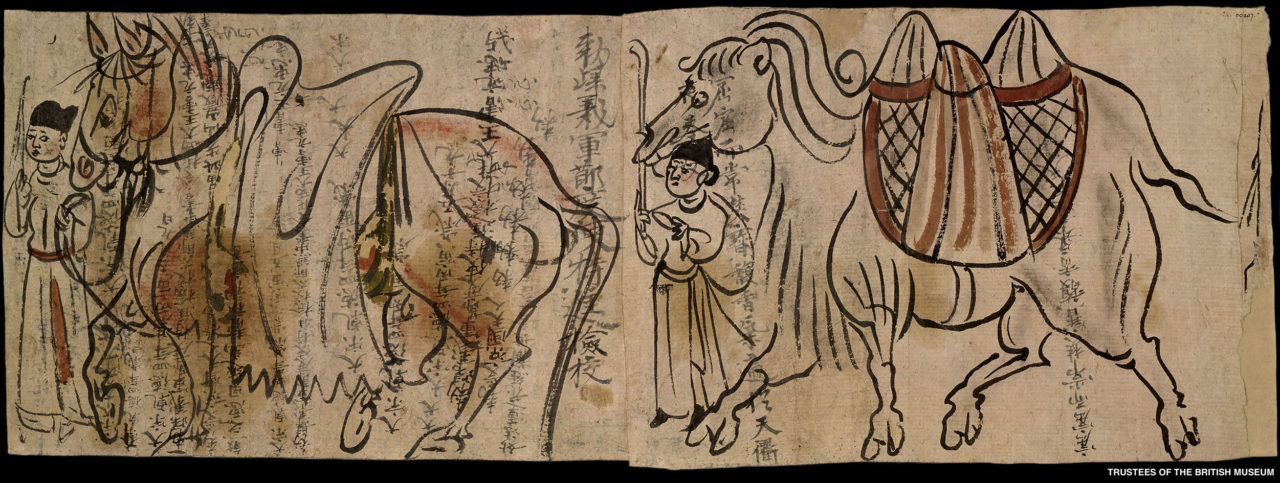
As east and west criss-crossed each other they left behind the most amazing array of manuscripts, books, paintings, sculptures, and architecture in a warren of 500 caves spread across two kilometres of ironically godforsaken desert.
All this artistic energy started to wane around the 11th century, when Dunhuang went into decline, and forgive the shorthand sweep across history, but fast forward to 1963 and Ms Jinshi was sent to the area after graduating in archaeology from Peking University.
It sounds to me like it was a sand-blown hell hole, but she fell in love with her work and never left, despite shortages of water and electricity, no creature comforts, and the most troubling of times in Chinese history during which even the remotest of China’s regions suffered.
Nowadays Ms Jinshi is honorary director of Dunhuang Academy and is known as the Daughter of Dunhuang. The caves, aka Mogao Grottoes, are a UNESCO World Heritage Site, and Ms Jinshi was a pioneer in digital archiving when she realised growing tourism numbers could damage the artworks which had been preserved over centuries by being buried in sand. She also helped to stage a major exhibition at the Getty Center, a world-famous museum in Los Angeles, three years ago.
She has, in her working lifetime, chronicled every one of the caves and is known for being extraordinarily accurate in her work. At the press conference, Dr Lui said “her positive energy and tireless determination inspire us all”.
What a tale! As I said, now and then press conferences are worth going to.
August 2019
MORE INFO
 “THE MOGAO CAVES… comprise the largest, most richly endowed, and longest used treasure house of Buddhist art in the world” – from UNESCO’s Mogao Caves page. READ MORE
“THE MOGAO CAVES… comprise the largest, most richly endowed, and longest used treasure house of Buddhist art in the world” – from UNESCO’s Mogao Caves page. READ MORE
RELATED
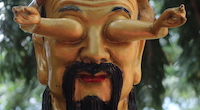 NIGHTMARE BUDDHAS: You may think of Buddha as a jolly, fat figure that brings peace and joy to the world. Visit this monastery and you’ll think again. Some of the golden statues of Buddhas… READ MORE
NIGHTMARE BUDDHAS: You may think of Buddha as a jolly, fat figure that brings peace and joy to the world. Visit this monastery and you’ll think again. Some of the golden statues of Buddhas… READ MORE
RECOMMENDED
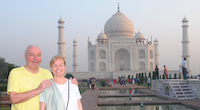 WELCOME TO OUR WORLD! Afaranwide’s home page – this is where you can find out about our latest posts and other highlights. READ MORE
WELCOME TO OUR WORLD! Afaranwide’s home page – this is where you can find out about our latest posts and other highlights. READ MORE
 TOP 10 VIRTUAL ATTRACTIONS: Many of the world’s most popular tourists sites are closed because of the coronavirus crisis, but you can still visit them virtually while you’re self-isolating. READ MORE
TOP 10 VIRTUAL ATTRACTIONS: Many of the world’s most popular tourists sites are closed because of the coronavirus crisis, but you can still visit them virtually while you’re self-isolating. READ MORE
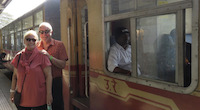 SHIMLA, QUEEN OF THE HILLS: Government officials once retreated to Shimla in the foothills of the Himalayas to escape India’s blazing hot summers. Now tourists make the same journey. READ MORE
SHIMLA, QUEEN OF THE HILLS: Government officials once retreated to Shimla in the foothills of the Himalayas to escape India’s blazing hot summers. Now tourists make the same journey. READ MORE
 TEN THINGS WE LEARNED: Our up-to-the-minute guide to creating a website, one step at a time. The costs, the mistakes – it’s what we wish we’d known when we started blogging. READ MORE
TEN THINGS WE LEARNED: Our up-to-the-minute guide to creating a website, one step at a time. The costs, the mistakes – it’s what we wish we’d known when we started blogging. READ MORE
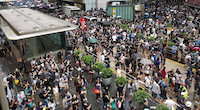 TROUBLED TIMES FOR EXPATS: Moving abroad can seem an idyllic prospect, but what happens when sudden upheavals or the inescapable realities of life intrude? READ MORE
TROUBLED TIMES FOR EXPATS: Moving abroad can seem an idyllic prospect, but what happens when sudden upheavals or the inescapable realities of life intrude? READ MORE
LET'S KEEP IN TOUCH!
Ancient Art and a
Friend's
Modern Dilemma

SUE BRATTLE
UPDATE on Woman Who Preserved Amazing Treasure Trove
Lui Che Woo Prize awards ceremony, Hong Kong
WHEN the “Asian Nobel” prizewinners were announced at a press conference in August, I posted about one winner who has devoted her life to documenting and preserving a two-kilometre stretch of caves filled with Buddhas, manuscripts and art in the middle of nowhere in China. Everything about her story had captured my imagination.
The organisers said the prizewinners would come to Hong Kong in October to receive their award of HK$20 million each (around US$2.5 million), but a lot has happened in Hong Kong since then.
However, true to their word the winners flew in to this city now riven by protests and I went along to another press conference in the hope of having a chat. It was held at the HK Exhibition and Convention Centre this time, in a setting so grand that us media looked a bit lost.
We also looked a bit under-dressed, since the press conference was being followed by a grand banquet in the winners’ honour so almost everyone was in evening gowns and tuxedos. Anyway, it all went smoothly and businessman Dr Lui Che Woo, dressed in tuxedo and his signature flat cap, climbed up on stage to present his namesake prizes.
It then became apparent that was the nearest I’d get to Ms Fan Jinshi, the 81-year-old archaeologist who bagged the Positive Energy prize. I’d been able to take her photo earlier as she sat chatting to the invited guests around her and she made a gracious acceptance speech in which she said youngsters “brighter and smarter than me” will take on her work. “The longer time I have spent in the caves, the more I realise how important they are. They are a very important part of human civilisation,” she said.
And that was it. During the short ceremony, some very smart security guards had turned up and were dotted around the room. I left the venue listening to my own footsteps as everywhere was eerily empty and quiet. I got to the taxi stand, and there were five taxis waiting and no queue – outside an exhibition centre so vast you can easily clock up your daily 10,000 steps finding your destination.
On the way home I looked up the event on my phone, and all became clear. As we members of the press had been leaving, the guest of honour for the banquet was arriving – Mrs Carrie Lam, chief executive of Hong Kong and the beleaguered target of months of unrest in the city. It turns out she’s always the speaker at this ceremony, and she’s an old friend of Ms Jinshi. I wonder who will deliver the speech next year?
Top picture: Interior of cave 275 with a sculpture of a bodhisattva, Northern Liang dynasty (420-429 AD). Photo: Wu Jian/Dunhuang Academy.
October 2019

When the Real Deal Makes a Press Conference Worthwhile
ORIGINAL POST: Lui Che Woo Prize press conference, Hong Kong
PRESS conferences, if you’ve never been to one, are set pieces with every detail orchestrated to within an inch of its life. There might be a celebrity or two if it’s the launch of a product, or an eminent academic, politician or so on if it’s an announcement.
Now and then, they are genuinely interesting and it’s one of those that I attended last week. The Lui Che Woo Prize for World Civilisation has been called the Asian Nobels; now in its fourth year and funded by the multi-billionaire businessman it is named after, each recipient receives HK$20 million (around US$2.5 million).
Dr Lui held the press conference to announce that one of his three winners this year is Ms Fan Jinshi, who has spent the last 56 of her 81 years researching and protecting the Dunhuang Mogao Caves in north China, also known as the Caves of 1,000 Buddhas.
No, I’d never heard of them either, so sat in the lush surroundings of Hong Kong’s Four Seasons hotel desperately Googling them while Dr Lui was up on stage speaking with blatant admiration about this Chinese archaeologist.
The images that came up on my iPhone screen blew my mind; a collection of around 1,000 exquisite Buddhas carved into rocks in the middle of nowhere. Except, that was the point. Dunhuang was the first place along the ancient Silk Road that traders from the west would encounter in China. And for hundreds of years it was a place of pilgrimage for Buddhists.

As east and west criss-crossed each other they left behind the most amazing array of manuscripts, books, paintings, sculptures, and architecture in a warren of 500 caves spread across two kilometres of ironically godforsaken desert.
All this artistic energy started to wane around the 11th century, when Dunhuang went into decline, and forgive the shorthand sweep across history, but fast forward to 1963 and Ms Jinshi was sent to the area after graduating in archaeology from Peking University.
It sounds to me like it was a sand-blown hell hole, but she fell in love with her work and never left, despite shortages of water and electricity, no creature comforts, and the most troubling of times in Chinese history during which even the remotest of China’s regions suffered.
Nowadays Ms Jinshi is honorary director of Dunhuang Academy and is known as the Daughter of Dunhuang. The caves, aka Mogao Grottoes, are a UNESCO World Heritage Site, and Ms Jinshi was a pioneer in digital archiving when she realised growing tourism numbers could damage the artworks which had been preserved over centuries by being buried in sand. She also helped to stage a major exhibition at the Getty Center, a world-famous museum in Los Angeles, three years ago.
She has, in her working lifetime, chronicled every one of the caves and is known for being extraordinarily accurate in her work. At the press conference, Dr Lui said “her positive energy and tireless determination inspire us all”.
What a tale! As I said, now and then press conferences are worth going to.
August 2019
MORE INFO
 “THE MOGAO CAVES… comprise the largest, most richly endowed, and longest used treasure house of Buddhist art in the world” – from UNESCO’s Mogao Caves page. READ MORE
“THE MOGAO CAVES… comprise the largest, most richly endowed, and longest used treasure house of Buddhist art in the world” – from UNESCO’s Mogao Caves page. READ MORE
RELATED
 NIGHTMARE BUDDHAS: You may think of Buddha as a jolly, fat figure that brings peace and joy to the world. Visit this monastery and you’ll think again. Some of the golden statues of Buddhas… READ MORE
NIGHTMARE BUDDHAS: You may think of Buddha as a jolly, fat figure that brings peace and joy to the world. Visit this monastery and you’ll think again. Some of the golden statues of Buddhas… READ MORE
RECOMMENDED
 WELCOME TO OUR WORLD! Afaranwide’s home page – this is where you can find out about our latest posts and other highlights. READ MORE
WELCOME TO OUR WORLD! Afaranwide’s home page – this is where you can find out about our latest posts and other highlights. READ MORE
 TOP 10 VIRTUAL ATTRACTIONS: Many of the world’s most popular tourists sites are closed because of the coronavirus crisis, but you can still visit them virtually while you’re self-isolating. READ MORE
TOP 10 VIRTUAL ATTRACTIONS: Many of the world’s most popular tourists sites are closed because of the coronavirus crisis, but you can still visit them virtually while you’re self-isolating. READ MORE
 SHIMLA, QUEEN OF THE HILLS: Government officials once retreated to Shimla in the foothills of the Himalayas to escape India’s blazing hot summers. Now tourists make the same journey. READ MORE
SHIMLA, QUEEN OF THE HILLS: Government officials once retreated to Shimla in the foothills of the Himalayas to escape India’s blazing hot summers. Now tourists make the same journey. READ MORE
 TEN THINGS WE LEARNED: Our up-to-the-minute guide to creating a website, one step at a time. The costs, the mistakes – it’s what we wish we’d known when we started blogging. READ MORE
TEN THINGS WE LEARNED: Our up-to-the-minute guide to creating a website, one step at a time. The costs, the mistakes – it’s what we wish we’d known when we started blogging. READ MORE
 TROUBLED TIMES FOR EXPATS: Moving abroad can seem an idyllic prospect, but what happens when sudden upheavals or the inescapable realities of life intrude? READ MORE
TROUBLED TIMES FOR EXPATS: Moving abroad can seem an idyllic prospect, but what happens when sudden upheavals or the inescapable realities of life intrude? READ MORE
LET'S KEEP IN TOUCH!
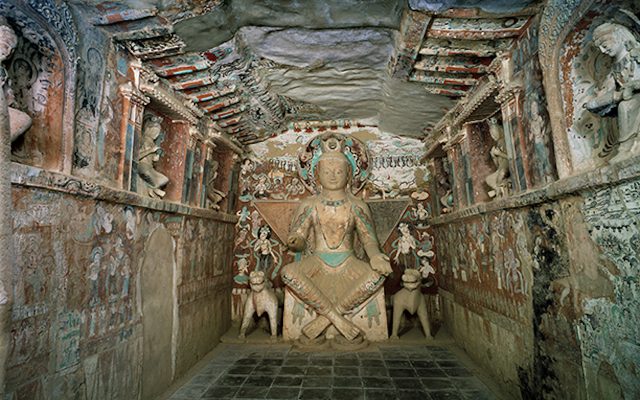
Ancient Art and a Friend's Modern Dilemma
UPDATE on Woman Who Preserved Amazing Treasure Trove

SUE BRATTLE
Lui Che Woo Prize awards ceremony, Hong Kong
WHEN the “Asian Nobel” prizewinners were announced at a press conference in August, I posted about one winner who has devoted her life to documenting and preserving a two-kilometre stretch of caves filled with Buddhas, manuscripts and art in the middle of nowhere in China. Everything about her story had captured my imagination.
The organisers said the prizewinners would come to Hong Kong in October to receive their award of HK$20 million each (around US$2.5 million), but a lot has happened in Hong Kong since then.
However, true to their word the winners flew in to this city now riven by protests and I went along to another press conference in the hope of having a chat. It was held at the HK Exhibition and Convention Centre this time, in a setting so grand that us media looked a bit lost.
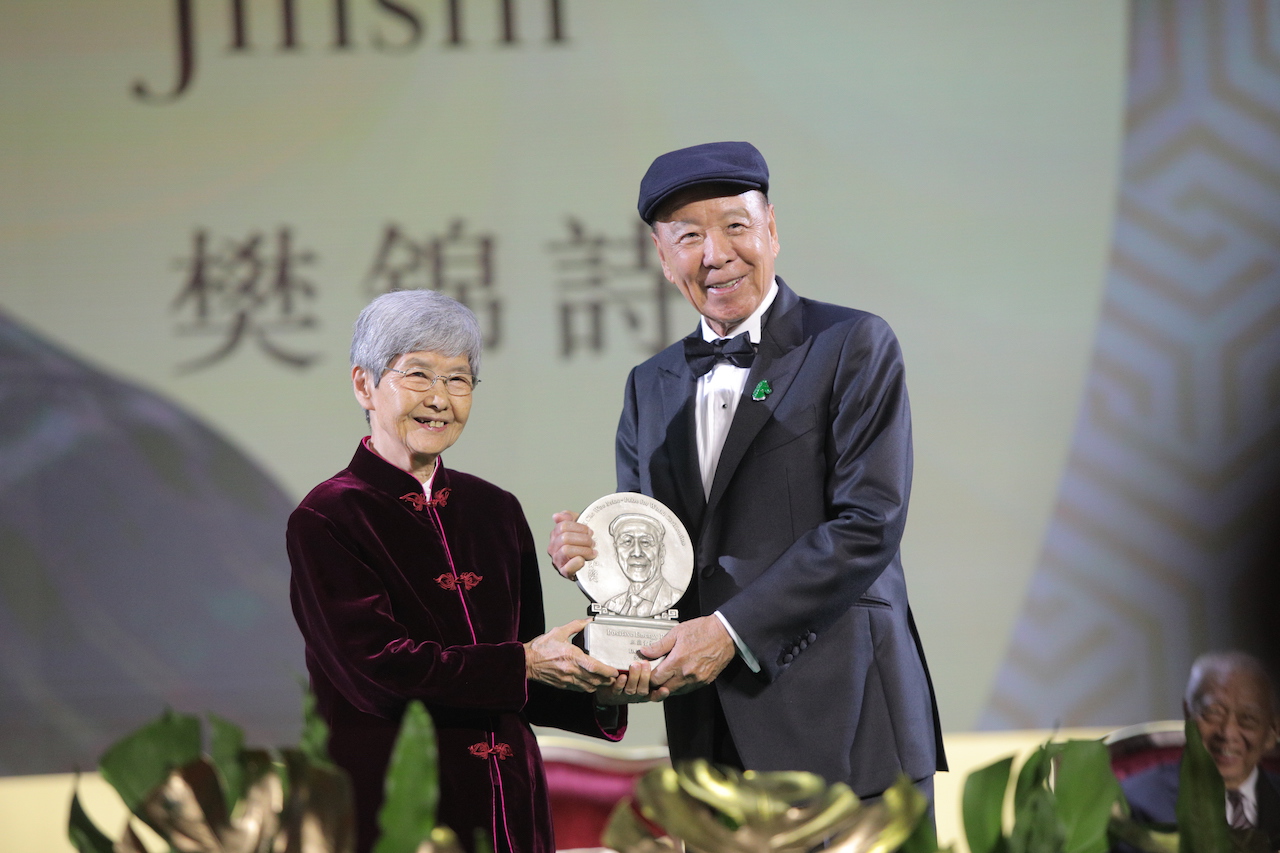
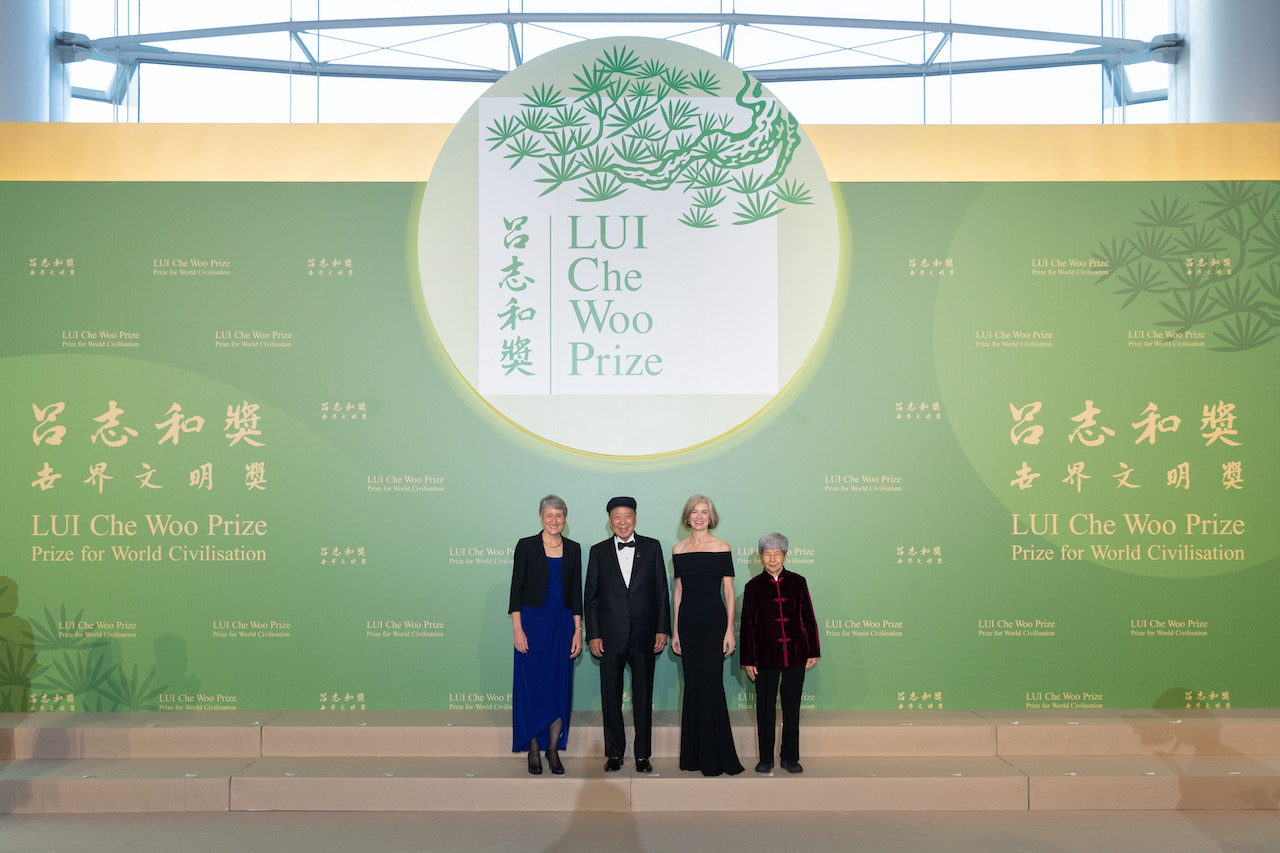
We also looked a bit under-dressed, since the press conference was being followed by a grand banquet in the winners’ honour so almost everyone was in evening gowns and tuxedos. Anyway, it all went smoothly and businessman Dr Lui Che Woo, dressed in tuxedo and his signature flat cap, climbed up on stage to present his namesake prizes.
It then became apparent that was the nearest I’d get to Ms Fan Jinshi, the 81-year-old archaeologist who bagged the Positive Energy prize. I’d been able to take her photo earlier as she sat chatting to the invited guests around her and she made a gracious acceptance speech in which she said youngsters “brighter and smarter than me” will take on her work. “The longer time I have spent in the caves, the more I realise how important they are. They are a very important part of human civilisation,” she said.
And that was it. During the short ceremony, some very smart security guards had turned up and were dotted around the room. I left the venue listening to my own footsteps as everywhere was eerily empty and quiet. I got to the taxi stand, and there were five taxis waiting and no queue – outside an exhibition centre so vast you can easily clock up your daily 10,000 steps finding your destination.
On the way home I looked up the event on my phone, and all became clear. As we members of the press had been leaving, the guest of honour for the banquet was arriving – Mrs Carrie Lam, chief executive of Hong Kong and the beleaguered target of months of unrest in the city. It turns out she’s always the speaker at this ceremony, and she’s an old friend of Ms Jinshi. I wonder who will deliver the speech next year?
Top picture: Interior of cave 275 with a sculpture of a bodhisattva, Northern Liang dynasty (420-429 AD). Photo: Wu Jian/Dunhuang Academy.


October 2019
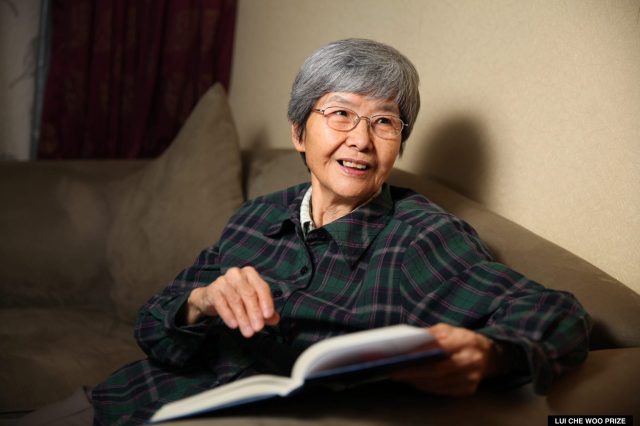
When the Real Deal Makes a Press Conference Worthwhile
ORIGINAL POST: Lui Che Woo Prize press conference, Hong Kong
PRESS conferences, if you’ve never been to one, are set pieces with every detail orchestrated to within an inch of its life. There might be a celebrity or two if it’s the launch of a product, or an eminent academic, politician or so on if it’s an announcement.
Now and then, they are genuinely interesting and it’s one of those that I attended last week. The Lui Che Woo Prize for World Civilisation has been called the Asian Nobels; now in its fourth year and funded by the multi-billionaire businessman it is named after, each recipient receives HK$20 million (around US$2.5 million).
Dr Lui held the press conference to announce that one of his three winners this year is Ms Fan Jinshi, who has spent the last 56 of her 81 years researching and protecting the Dunhuang Mogao Caves in north China, also known as the Caves of 1,000 Buddhas.
No, I’d never heard of them either, so sat in the lush surroundings of Hong Kong’s Four Seasons hotel desperately Googling them while Dr Lui was up on stage speaking with blatant admiration about this Chinese archaeologist.
The images that came up on my iPhone screen blew my mind; a collection of around 1,000 exquisite Buddhas carved into rocks in the middle of nowhere. Except, that was the point. Dunhuang was the first place along the ancient Silk Road that traders from the west would encounter in China. And for hundreds of years it was a place of pilgrimage for Buddhists.

As east and west criss-crossed each other they left behind the most amazing array of manuscripts, books, paintings, sculptures, and architecture in a warren of 500 caves spread across two kilometres of ironically godforsaken desert.
All this artistic energy started to wane around the 11th century, when Dunhuang went into decline, and forgive the shorthand sweep across history, but fast forward to 1963 and Ms Jinshi was sent to the area after graduating in archaeology from Peking University.
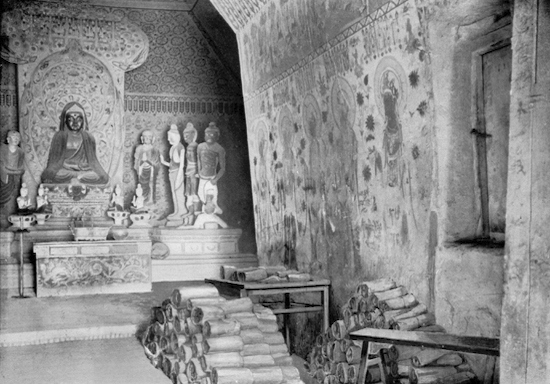
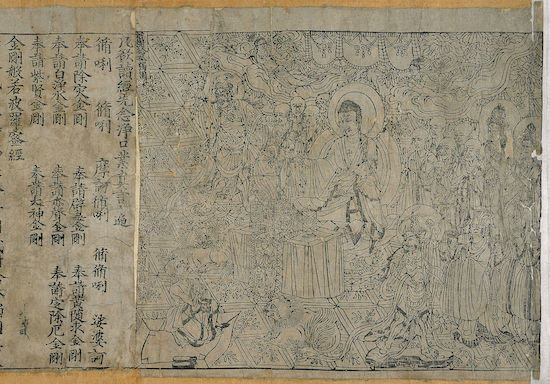
It sounds to me like it was a sand-blown hell hole, but she fell in love with her work and never left, despite shortages of water and electricity, no creature comforts, and the most troubling of times in Chinese history during which even the remotest of China’s regions suffered.
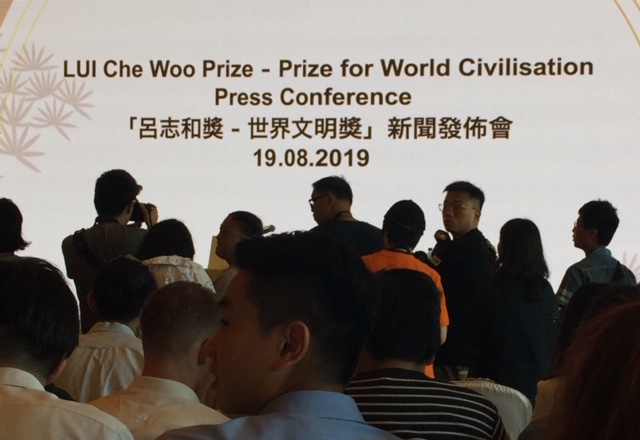
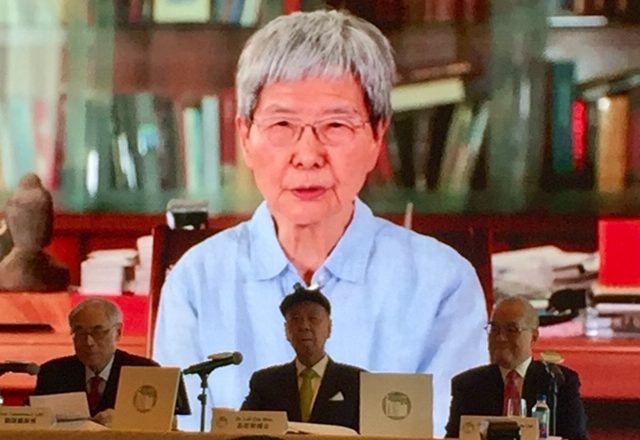
Nowadays Ms Jinshi is honorary director of Dunhuang Academy and is known as the Daughter of Dunhuang. The caves, aka Mogao Grottoes, are a UNESCO World Heritage Site, and Ms Jinshi was a pioneer in digital archiving when she realised growing tourism numbers could damage the artworks which had been preserved over centuries by being buried in sand. She also helped to stage a major exhibition at the Getty Center, a world-famous museum in Los Angeles, three years ago.
She has, in her working lifetime, chronicled every one of the caves and is known for being extraordinarily accurate in her work. At the press conference, Dr Lui said “her positive energy and tireless determination inspire us all”.
What a tale! As I said, now and then press conferences are worth going to.

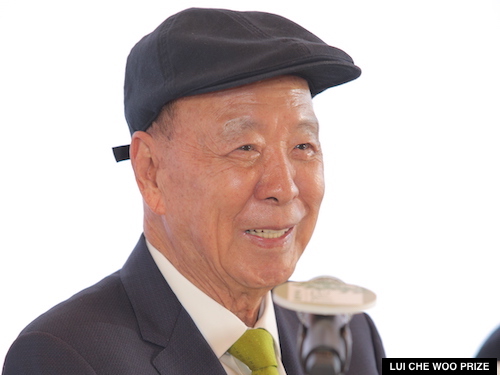
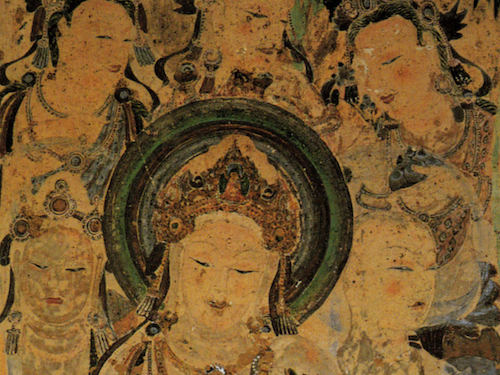
August 2019
MORE INFO
 “THE MOGAO CAVES… comprise the largest, most richly endowed, and longest used treasure house of Buddhist art in the world” – from UNESCO’s Mogao Caves page. READ MORE
“THE MOGAO CAVES… comprise the largest, most richly endowed, and longest used treasure house of Buddhist art in the world” – from UNESCO’s Mogao Caves page. READ MORE
RELATED
 NIGHTMARE BUDDHAS: You may think of Buddha as a jolly, fat figure that brings peace and joy to the world. Visit this monastery and you’ll think again. Some of the golden statues of Buddhas… READ MORE
NIGHTMARE BUDDHAS: You may think of Buddha as a jolly, fat figure that brings peace and joy to the world. Visit this monastery and you’ll think again. Some of the golden statues of Buddhas… READ MORE
RECOMMENDED
 WELCOME TO OUR WORLD! Afaranwide’s home page – this is where you can find out about our latest posts and other highlights. READ MORE
WELCOME TO OUR WORLD! Afaranwide’s home page – this is where you can find out about our latest posts and other highlights. READ MORE
 TOP 10 VIRTUAL ATTRACTIONS: Many of the world’s most popular tourists sites are closed because of the coronavirus crisis, but you can still visit them virtually while you’re self-isolating. READ MORE
TOP 10 VIRTUAL ATTRACTIONS: Many of the world’s most popular tourists sites are closed because of the coronavirus crisis, but you can still visit them virtually while you’re self-isolating. READ MORE
 SHIMLA, QUEEN OF THE HILLS: Government officials once retreated to Shimla in the foothills of the Himalayas to escape India’s blazing hot summers. Now tourists make the same journey. READ MORE
SHIMLA, QUEEN OF THE HILLS: Government officials once retreated to Shimla in the foothills of the Himalayas to escape India’s blazing hot summers. Now tourists make the same journey. READ MORE
 TEN THINGS WE LEARNED: Our up-to-the-minute guide to creating a website, one step at a time. The costs, the mistakes – it’s what we wish we’d known when we started blogging. READ MORE
TEN THINGS WE LEARNED: Our up-to-the-minute guide to creating a website, one step at a time. The costs, the mistakes – it’s what we wish we’d known when we started blogging. READ MORE
 TROUBLED TIMES FOR EXPATS: Moving abroad can seem an idyllic prospect, but what happens when sudden upheavals or the inescapable realities of life intrude? READ MORE
TROUBLED TIMES FOR EXPATS: Moving abroad can seem an idyllic prospect, but what happens when sudden upheavals or the inescapable realities of life intrude? READ MORE